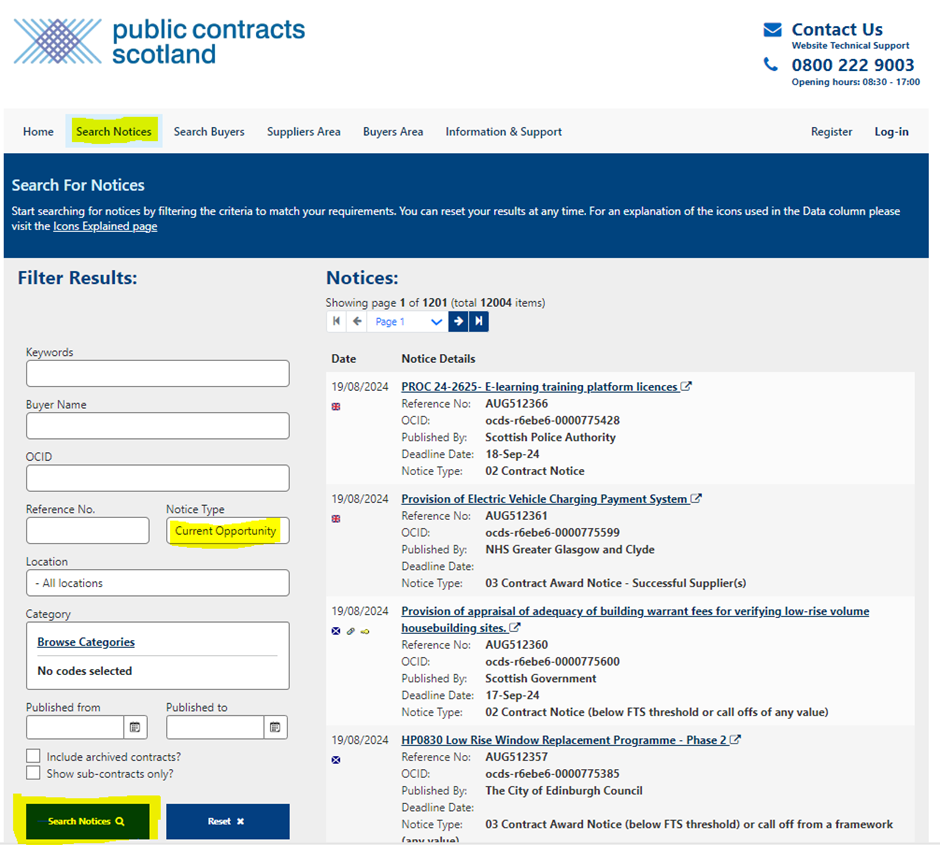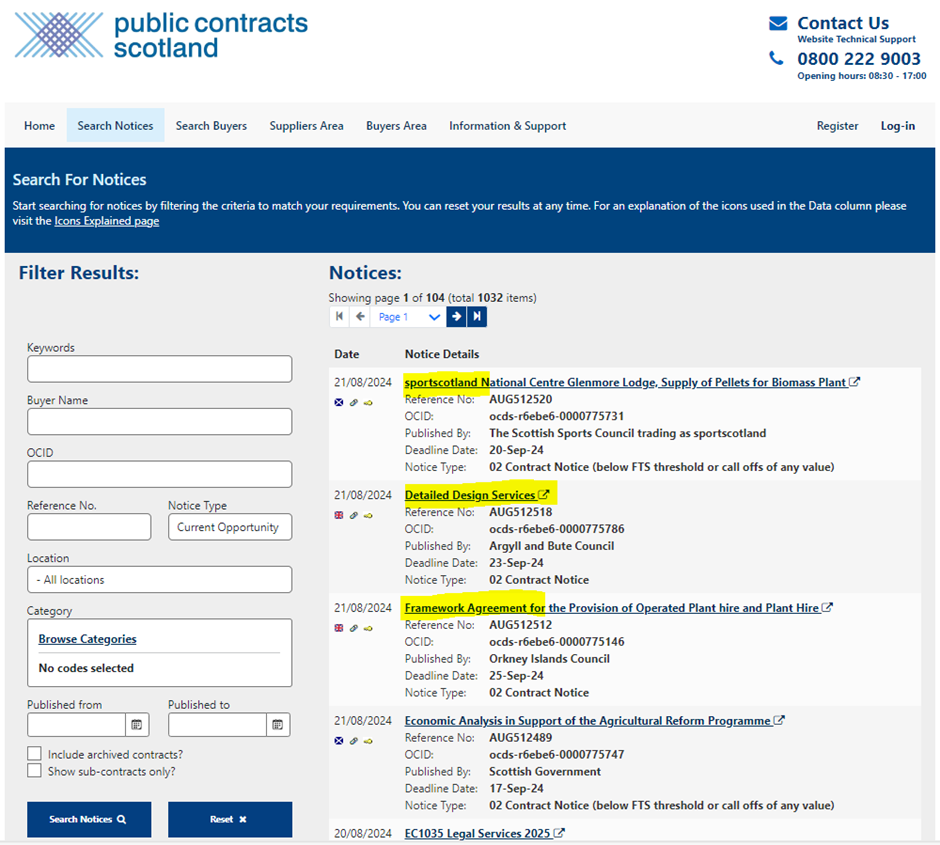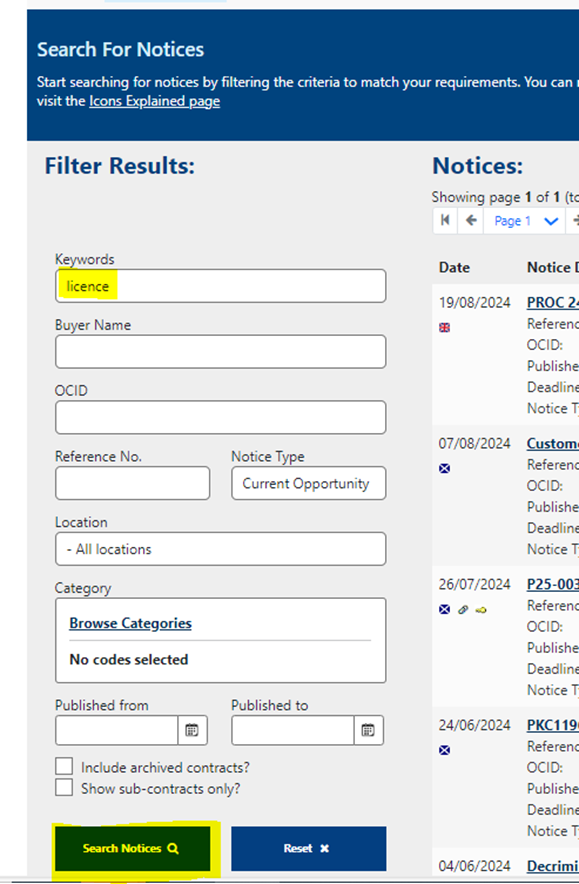A Contract Notice is how a public sector buyer formally advertises a public sector contract opportunity.
The Contract Notice will include enough information to help you to decide whether to bid for the contract opportunity or not, This is because the Contract Notice must contain the minimum and specific requirements for the procurement exercise.
All Scottish public bodies must publish their Contract Notices on Public Contracts Scotland (PCS) for regulated procurements i.e. contracts valued at £50,000 or above, excluding VAT, for goods and services. The only exception is where a buyer is using the Negotiated Procedure without Prior Notification procurement procedure. This is a procedure which can only be used in strictly defined and exceptional circumstances.
1. go to the Search Notices area of PCS:

2. click on n Notice Type
3. select Current Opportunity
4. then click Search to view all Contract Notices.
Your search will list many results on the left hand side of the page. Click on the title to look at each result in more detail:

You can use more of the filter options on the left hand of the page to streamline your results further. For example, add a keyword relating to your goods or services in the Keyword search box:

You should try a few different combinations of keywords as buyers may use different keywords to describe opportunities.
Quickfire Guide
Contract Notice Contents
The Contract Notice will contain various information, to help you with your decision on whether to bid, such as:
| Contact Details | the name and contact details of the lead buying organisation |
| Joint Procurement Details | if applicable, joint procurement details i.e. the details of the other buying organisations involved |
| Procurement Documents | details of any procurement documents e.g. the SPD is the document used by the buyer to confirm whether a bidder is capable, and has the capacity, to meet the contract requirements. More information can be found in the SPD station |
| Entitled Public Bodies | which public bodies will be entitled to use the contract (particularly if the contract is being placed on behalf of a group of public bodies) |
| Contract Type | the type of contract e.g. goods or services |
| Contract Description | a description of the goods or services to be purchased |
| Geography | the geographical place(s) where the contract is to be performed |
| Lots | whether the contract will be split into lots, and if not, why not |
| Duration | the duration of the contract, including any possible contract extension periods |
| Scope | the scope of the contract, either by value or volume. The estimated total value of the contract should include all lots and all optional extension periods |
| Value | the estimated total value of the contract. This should include all lots and optional extension periods |
Commodity/ Service | the main commodity or service being procured e.g. IT equipment, and any other items which are not covered by the main category |
| Procurement Procedure | the procurement procedure that the tender will follow e.g. Open Procedure, etc. |
| Timescales | the time limit for the receipt of tenders or requests to participate. In an Open Procedure the time limit detailed in the Contract Notice is for the receipt of tenders i.e. the tender deadline. Where the procedure involves a separate selection stage the time limit detailed is for the request to participate i.e. the deadline for submitting selection information |
| Minimum Standards | the minimum standards, selection and exclusion criteria that apply to the contract as well as the basis on which the winning bidder will be decided i.e. the criteria which will be scored |
| Variant Bids | whether suppliers can offer a 'variant bid' i.e. an alternative way of meeting the requirements. This can be a useful way for suppliers to innovate |
| Limiting Candidates | Information on limiting the number of candidates to be invited, if applicable |
| Community Benefits | if the contract is over £4 million in value, whether and what Community Benefit requirements there are |